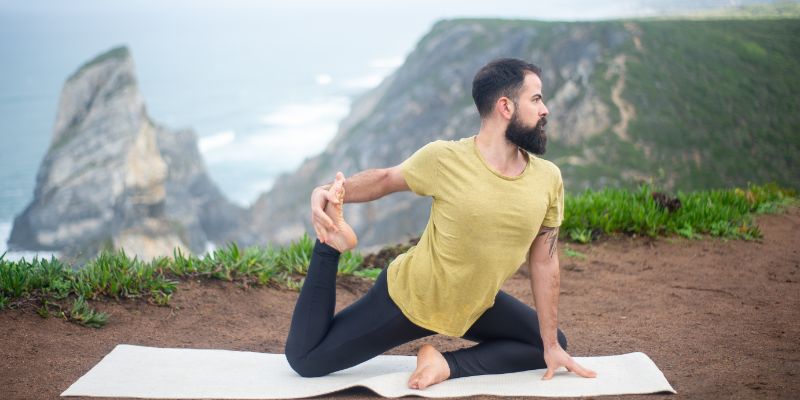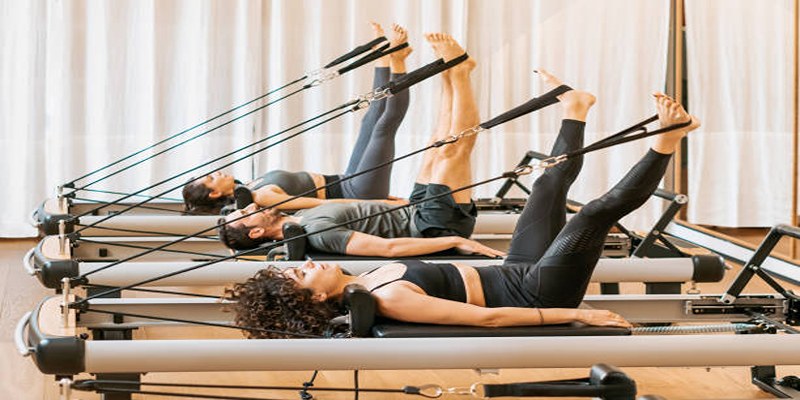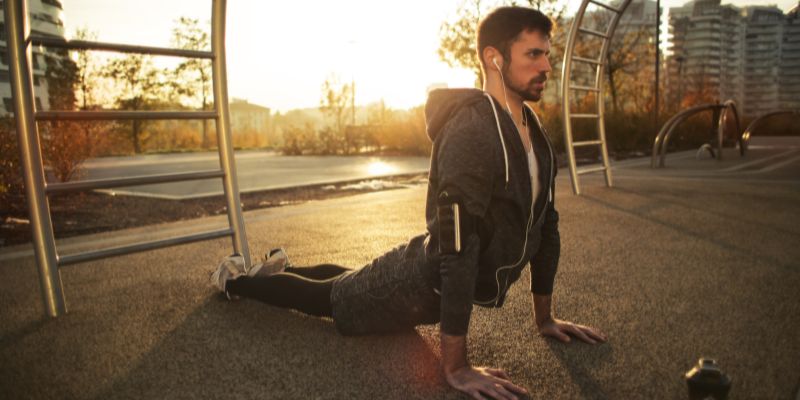Flexibility plays a crucial role in maintaining a healthy and pain-free life. It allows for optimal movement, improves balance and coordination, and even helps reduce the risk of injuries. Yet, many of us struggle with tight hamstrings, hips, and shoulders, leading to limitations in our daily activities and exercise routines.
Why Flexibility Matters
Flexibility goes beyond being able to touch your toes. It refers to the range of motion available in your joints. Having good flexibility allows for the following:
- Improved daily function: Activities like reaching for high shelves, tying your shoes, or getting in and out of a car become easier and more comfortable.
- Enhanced athletic performance: Increased range of motion translates to better coordination, speed, and power in various physical activities.
- Reduced risk of injuries: Tight muscles and poor flexibility can lead to muscle imbalances and increased strain on joints, making you more susceptible to injuries.
- Improved posture: Good flexibility helps maintain proper alignment of your spine and joints, leading to better posture and reducing aches and pains.
- Stress reduction and well-being: Stretching exercises, like yoga, promote relaxation and can be a powerful tool for managing stress and improving overall well-being.
Understanding Tightness: Causes and Effects

Several factors can contribute to tight hamstrings, hips, and shoulders:
- Inactivity: Sitting for extended periods, lack of exercise, and a sedentary lifestyle can lead to muscle shortening and stiffness.
- Overuse: Repetitive motions from certain sports or activities can strain and tighten specific muscle groups.
- Poor posture: Slouching or hunching can lead to muscle imbalances and tightness in specific areas.
- Aging: As we age, we naturally lose muscle mass and flexibility.
Chronic tightness in these areas can manifest as:
- Limited range of motion: Difficulty performing certain movements, like bending over or reaching overhead.
- Low back pain: Tight hamstrings can pull on the lower back, contributing to pain.
- Shoulder pain: Tightness in the shoulders can restrict movement and lead to discomfort.
- Increased risk of injuries: Limited flexibility can make you more prone to muscle tears and joint injuries.
Yoga as the Key to Flexibility

Yoga offers a safe, effective and one of the best ways to improve flexibility for all ages and abilities. It combines gentle stretches, breathing exercises, and mindful movement to gradually increase your range of motion while strengthening your muscles and improving stability.
Yoga poses specifically target different muscle groups, allowing you to focus on areas needing more attention, like your hamstrings, hips, and shoulders. Additionally, the focus on breathwork in yoga promotes relaxation and helps release tension in tight muscles.
9 Yoga Poses for Better Flexibility
Here are ten yoga poses designed to improve flexibility in your hamstrings, hips, and shoulders:
For Hamstrings:
- Head to Knee Pose (Janu Sirsasana): Sit on the floor, extend one leg straight, and bend the other leg, placing the foot flat on the inner thigh of the extended leg. Inhale and reach your torso towards the extended leg, keeping your spine straight. Hold for several breaths and repeat on the other side.
- Pyramid Pose (Parsvottanasana): Stand with your feet just about hip-width apart and step a big step back with one leg. Hinge at your hips and fold forward, keeping your back straight, reaching your hands towards the front foot. Hold for several breaths and repeat on the other side.
- Downward-Facing Dog Pose (Adho Mukha Svanasana): Start on your hands and knees with your hands being about shoulder-width apart. Keep the knees being around hip-width apart. Push your hips back and straighten your legs as much as possible, forming an inverted "V" shape. Keep your heels pushing towards the ground and your back straight. Hold for several breaths.
For Hips:
- Half Pigeon Pose (Ardha Kapotasana): Start in a downward-facing dog pose and bring one knee forward, placing it between your hands. Slide your other leg back, keeping it straight. Lean forward, keeping your torso upright, and feel the stretch in your hip flexor. Hold for several breaths and repeat on the other side.
- Lizard Pose (Uttanasana Pawanmuktasana): Start in a downward-facing dog pose and bring one knee forward, placing it outside your hand on the same side. Lower your forearms to the ground and slide your back leg back further. Keep your hips facing forward and feel the stretch in your hip and groin. Hold for several breaths and repeat on the other side.
- Crescent Lunge (Anjaneyasana): Step one leg back with a big lunge and bend your front knee to a 90-degree angle. Make sure your front knee is positioned directly over your ankle. Keep your back straight, and your torso lifted, reaching your hands up overhead. Hold for several breaths and repeat on the other side.
For Shoulders:
- Extended Puppy Pose (Uttana Shishosana): Begin on your hands and knees and walk your hands forward, lowering your chest towards the mat. Keep your hips over your knees and your forehead resting on the ground. Feel the stretch across your shoulders and chest. Hold for several breaths.
- Bridge Pose (Setu Bandhasana): start by lying down on your back on the mat or the floor with your knees bent normally and your feet straight on the floor, about a hip-width apart. Raise your hips off the mat or the floor, engaging your glutes and back. Hold for several breaths, then slowly lower your hips back on the ground.
- Cow Face Pose (Gomukhasana): Sit with your legs crossed and stack your knees. Bring one arm behind your back and reach up towards your shoulder while reaching the other arm overhead and bending the elbow to aim the hand towards your shoulder blades. If possible, clasp your fingers together behind your back. Hold for several breaths and repeat on the other side.
Bonus Pose:
Downward-Facing Dog Pose (Adho Mukha Svanasana).
Benefits for Hamstrings: This pose lengthens the back of your thighs, providing a gentle stretch for your hamstrings.
Benefits for Hips: The downward dog position opens up your hips, stretching the hip flexors and improving hip mobility.
Benefits for Shoulders: Holding this pose stretches your shoulders and chest, helping to improve their flexibility and range of motion.
The Bottom Line
It's important to remember that achieving flexibility is a journey. Practice these yoga poses regularly, and be patient with yourself. Focus on proper form to maximize the benefits and prevent injuries. Listen to your body and gradually deepen stretches over time. By incorporating yoga into your routine and dedicating some time to focused stretching, you will experience increased flexibility in your hamstrings, hips, and shoulders. This will allow for greater ease in your daily life and improve your overall movement potential.







